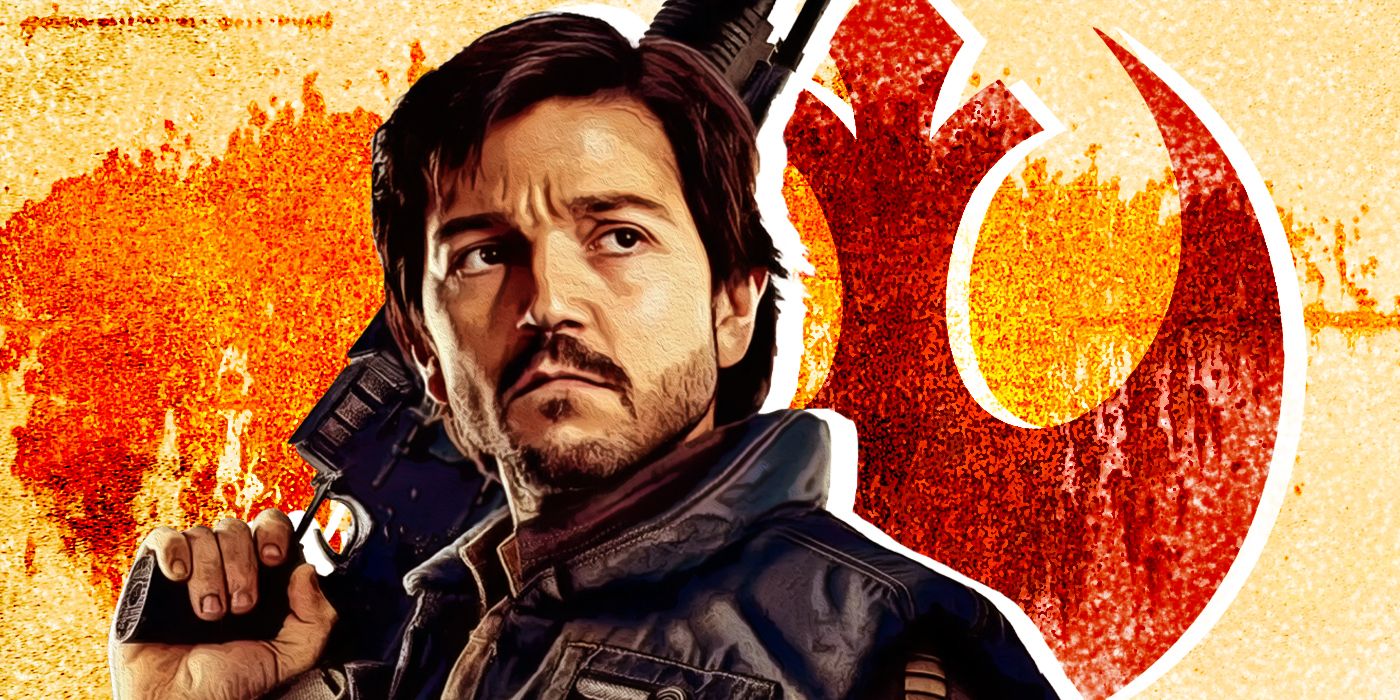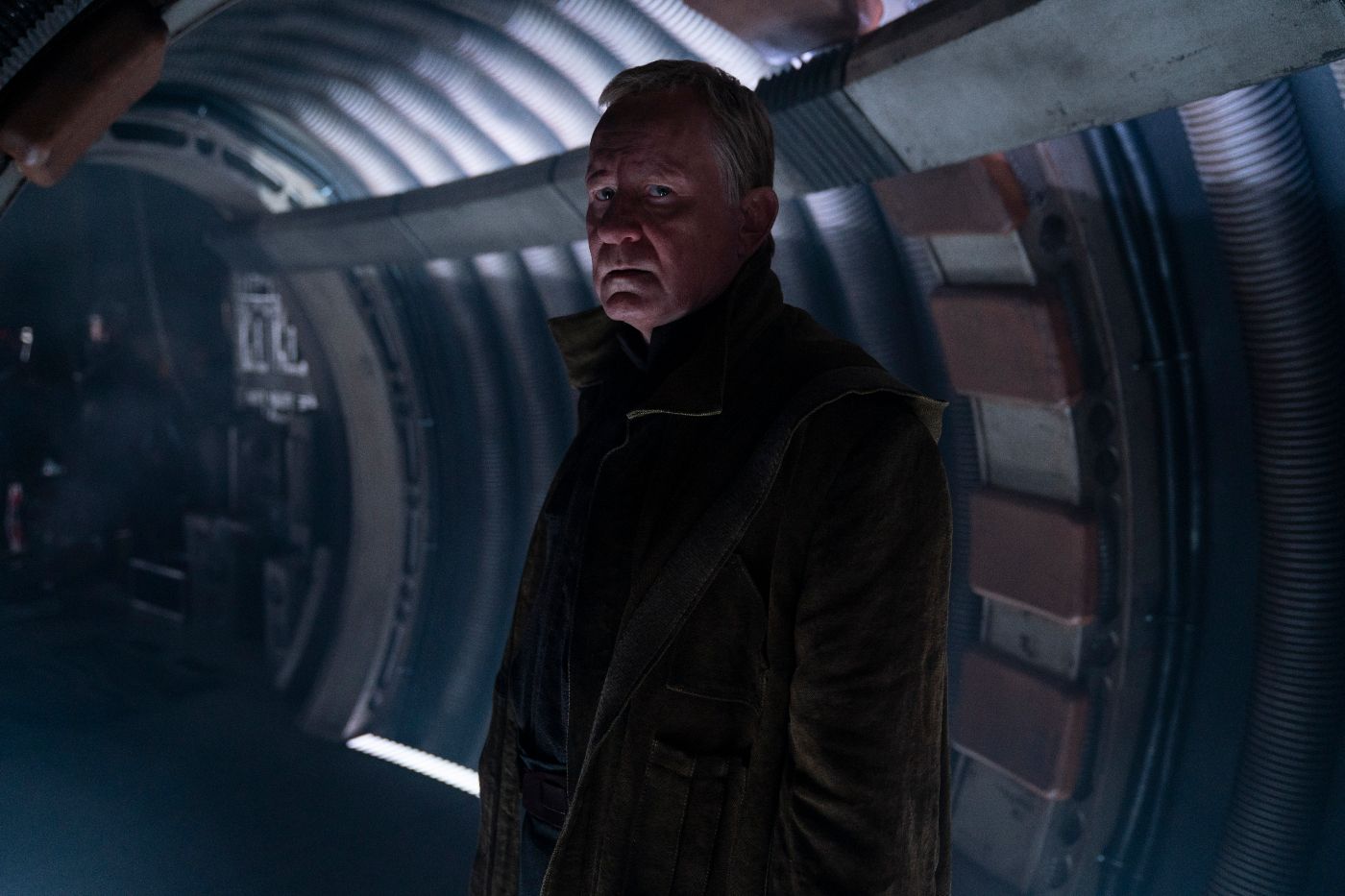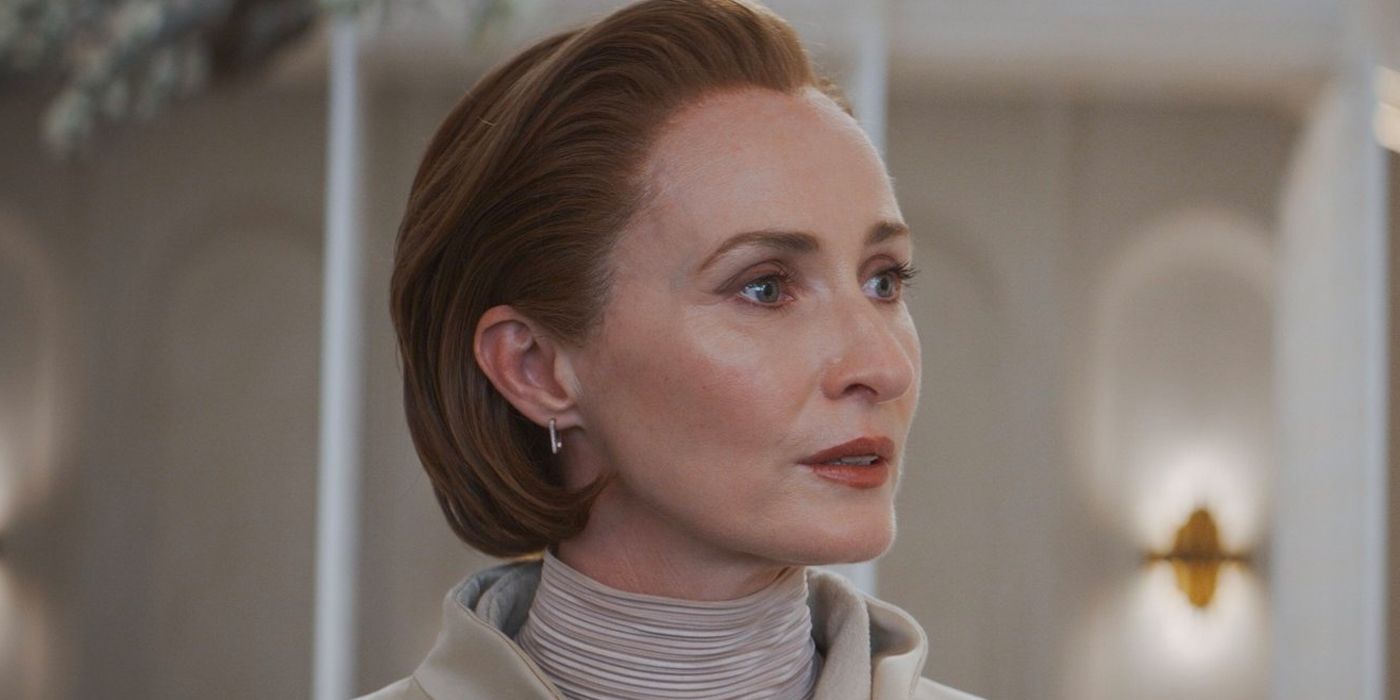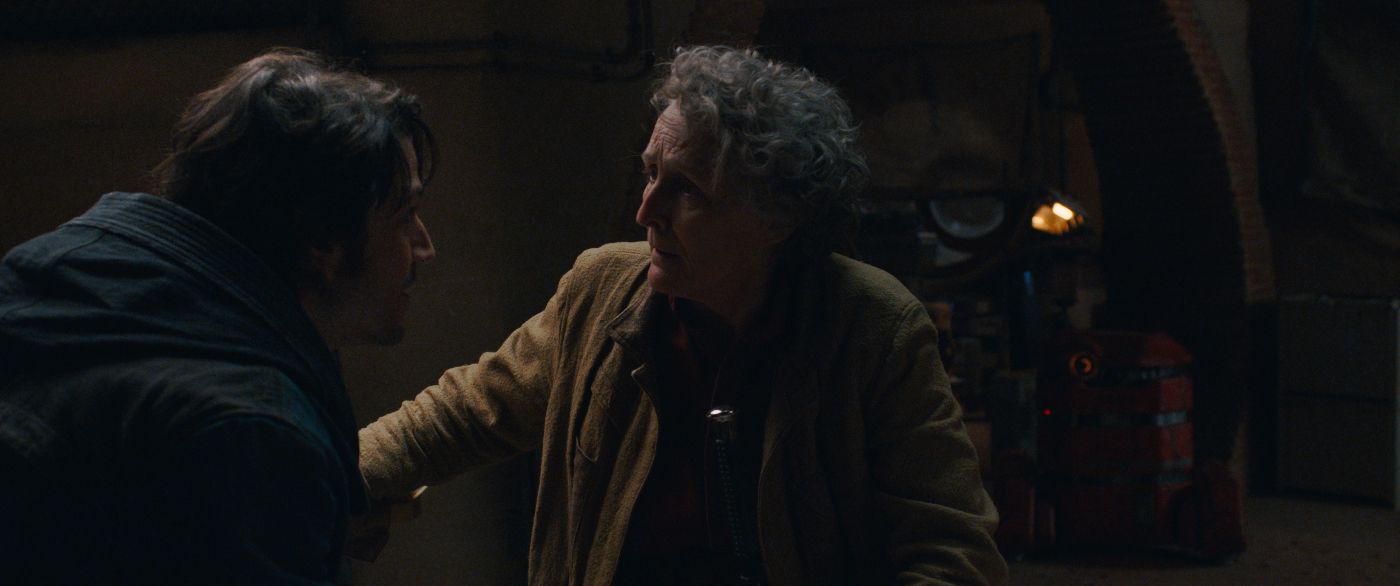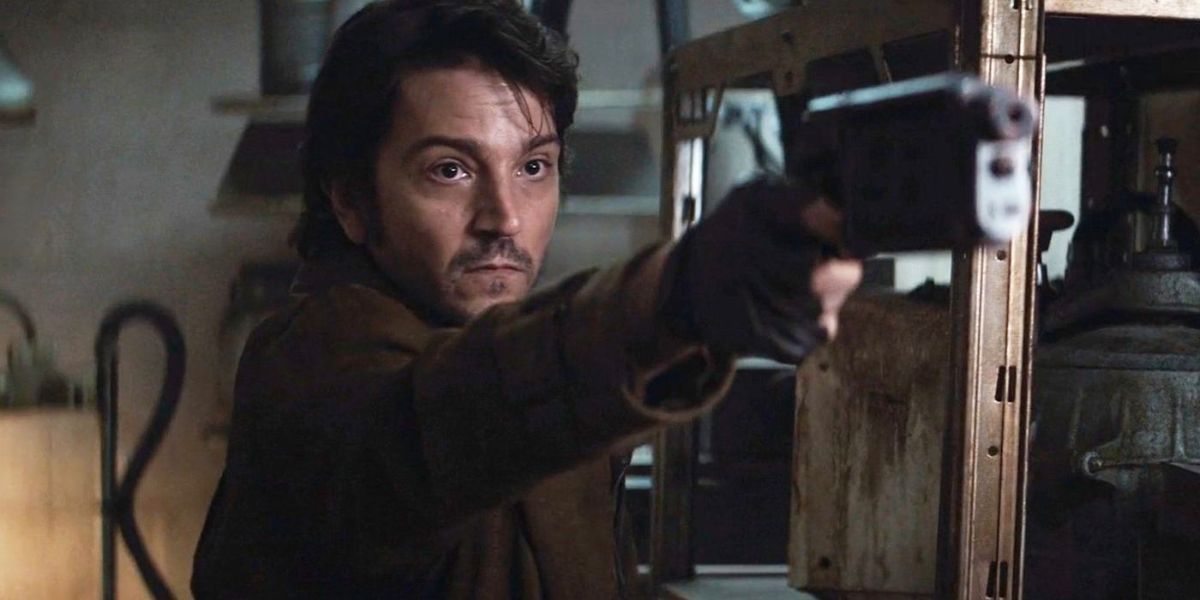Editor's Note: The following contains spoilers for Season 1 of Andor.
It seems obvious that the Rebellion didn’t start as a giant united effort, that it didn’t spring into being with squadrons, leaders, and resources the moment the spark of resistance struck. But we’ve never really seen these fetal stages of the Rebellion before. Luke Skywalker (Mark Hamill) joins up by a point at which the Rebellion has multiple footholds across the galaxy and enough political sway to have multiple diplomats on their side hidden in plain sight. Even Star Wars: Rebels, an animated series that covers the early years of the Rebellion, takes place far enough into the Rebellion’s existence that there are organized spy networks. Andor is really the first we’ve seen of the fledgling stages of the Rebellion. It shows us how messy its beginnings were with many losses, few victories, and no unity.
The rebellious spirit emerged in multiple places under the Empire’s tyranny and from there a number of rebel groups sprung up. These movements were grassroots efforts of people first to protect their own and later to fight the Empire. There is no central Rebellion yet, just small bands of disparate rebels scattered across the galaxy, occasionally working together but largely wary of each other. Andor shows us the Rebellion at its most fragile. Each group is small and at a high risk of discovery, every move they make is a major risk, and for the most part it's all they can do to focus on surviving to fight another day.
Who Will Unite the Scattered Rebellion?
Though the Rebellion we know doesn’t have a figurehead or definitive leader, it does have powerful figures and people who command respect. But back in the days of Andor, it was much messier. Without any unification, each Rebel group would find its own leaders, all with their own ways of doing things. And so we end up with a bunch of skilled Rebels who are unwilling to cede power or work together. Saw Gerrera (Forest Whitaker) wants to focus on guerilla tactics and doesn’t play well with others, not trusting how other leaders like Luthen (Stellan Skarsgård) or Kreegyr like to get things done. Luthen always takes a more subtle approach, opting to operate from the shadows rather than on the field like Saw. He likes to make calculated moves, but this puts him at odds with those who want to be more deliberate in their approach. And Kreegyr, though we don’t see much of him, comes off as somewhere in between, with the brashness of Saw but the audacity of Luthen to make big moves when he feels it necessary. In these fledgling days, these Rebel groups are too small and too vulnerable to trust each other and truly band together. Without the numbers or resources necessary to form a real army, they feel safer sticking to their own ways of things.
Casualties are a part of any war but the small rebel groups of Andor are particularly vulnerable. The Aldhani mission had few survivors and with no cohesive ideology, even that was marred with Skeen’s (Ebon Moss-Bachrach) attempt to collude with Cassian (Diego Luna) and steal the rewards. Ferrix is under siege for months just because suspected rebel colluder Cassian Andor happened to live there with his mother, Maarva (Fiona Shaw). Kreegyr’s team is completely obliterated by the Empire in Episode 12 before we even get to see them. The rebels are fractured, made up mostly of small strike teams, this makes the individual teams extremely vulnerable, but it's also a small blessing. Without a centralized force, even if a leader like Kreegyr is wiped off the map, there’s still hope for the movement's survival. The Empire can squash down one rebel band, but there are plenty of others to take their place. The fetal rebellion is extremely vulnerable yet impossible to destroy entirely by virtue of its decentralized nature. This is not yet our rebellion, but we can start to see how it will come to be.
Rebellion Leaders Emerge
In a similar vein, Mon Mothma (Genevieve O'Reilly) is a far cry from the version of her we see in A New Hope. We see her not as a strong and confident voice of change, commanding the Rebels to attack the Death Star. Instead, she’s dreadfully alone. She feels unwelcome and scrutinized even in her own home. What little efforts she’s been able to make to support Luthen and the Rebels with money or with her attempts to preach peace in the Senate have already been enough to place a target on her back. It's all she can do throughout most of the season to seek out a few trusted confidants to see if she can finagle her way into her own funds, only to discover her husband has been gambling it away. Mon Mothma is far from an assured Rebel leader. She’s in over her head, with few allies, and desperately trying to stay afloat long enough to make the Rebellion into something real. We know what Mon Mothma will become, but it's hard to imagine when, at the moment, all those closest to her seem the most likely to betray her.
There’s also a major difference in the rebellious spirit we witness in the people of the galaxy. In Andor, we see a growing spark of rebellion in the people but also a large amount of complicity. We like to think of those who would tell the Empire anything to be a bad person but for the most part, people are just complicit in an attempt to survive. Cassian starts out that way until he’s subjected to the Empire’s brutality first hand again and again.
Timm (James McArdle) sells out Cassian in an act of envy and cowardice, but it’s not outright evil. It’s an act of complicity and perceived self-preservation that backfires significantly on him. A similar thing occurs with another of Cassian’s “friends” in the final episode of the season. He offers information to the Imperials in exchange for a guarantee of safe passage off Ferrix. He acts out of fear and self-preservation but ultimately perishes anyway. His complicity, his betrayal, is meaningless. So when we see the spark of rebellion start to burn true after Maarva’s speech, it’s a welcome relief. A step towards something more familiar where dissent is loud and all-encompassing. We see firsthand how the people of Ferrix shift from complying with the Empire out of self-preservation to taking up arms when they’re crushed under its heel. We get to witness the birth of not just Cassian’s rebellion, but that of his entire people as well.
And their rebellion is largely unsuccessful. These aren’t armed Rebels with blasters and training. It’s musicians, workers, and children all gathered in mourning, taking up arms with whatever’s in reach, fighting back against impossible odds. It’s messy, disastrous, and full of casualties and yet the children of Ferrix embody the same rebellious spirit we’ve come to know from the movement as a whole.
The Building Blocks of the Rebellion
Andor shows us the building blocks that will become the Rebellion. In the next season, we’ll likely start to see the Rebellion take a more familiar shape. Luthen has had a rude awakening that his way of things might not be so flawless as he’d perceived and Saw Gerrrera is ready to negotiate working together far more readily than he was before. Kreegyr is lost, but it won’t be long before there are more Rebels to take his team's place. Mon Mothma may be backed into a corner at the moment, but she’s tactful and taking the leap to sacrifice her daughter to an arranged marriage to get herself some leverage again.
Cassian, who once thought the Rebels foolish, has read through Nemik’s manifesto and now offered his life to the cause. The pieces are finally starting to fall into place and as we see the rebellious spirit start to strike the people who once would have sat by, we start to see how this dower world of isolated, angry people who desperately want to fight back against tyranny but don’t have the strength to will eventually coalesce into a force strong enough to destroy the Death Star twice and bring the Empire to its knees.

